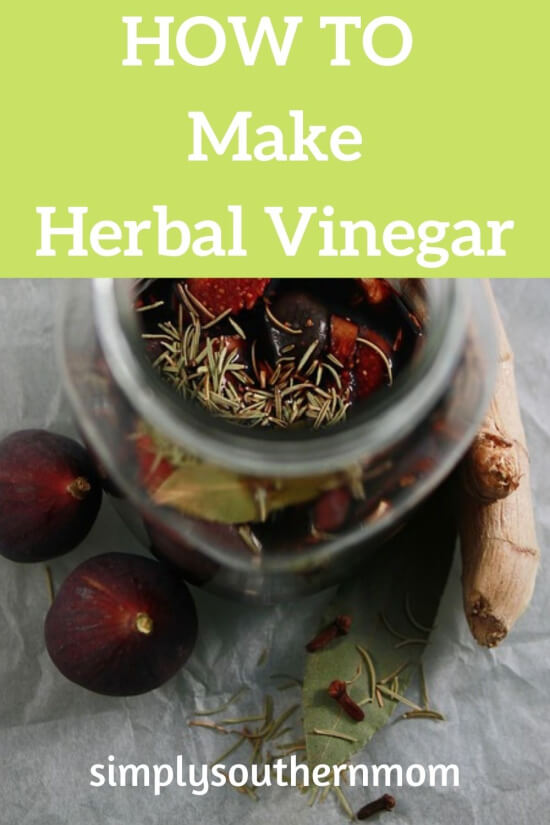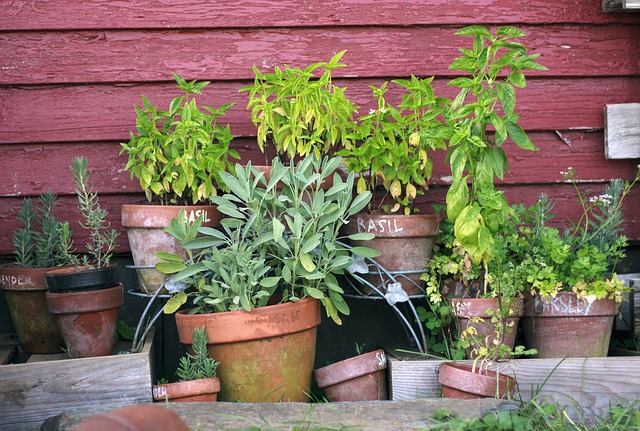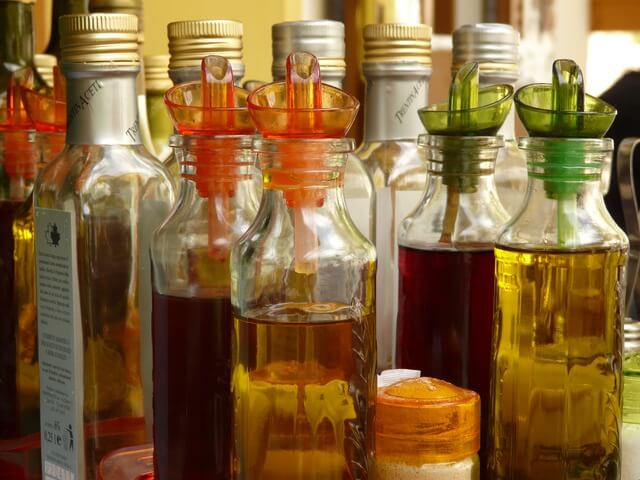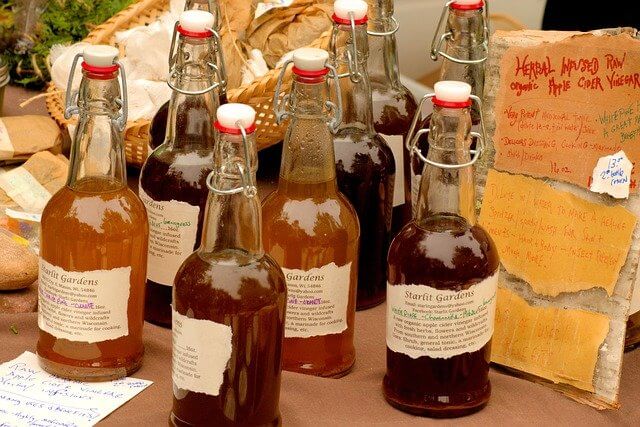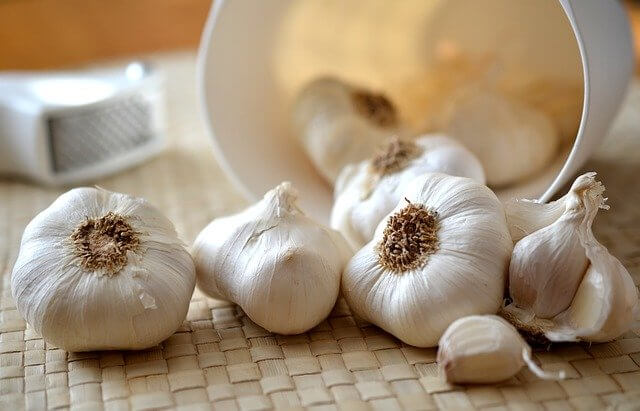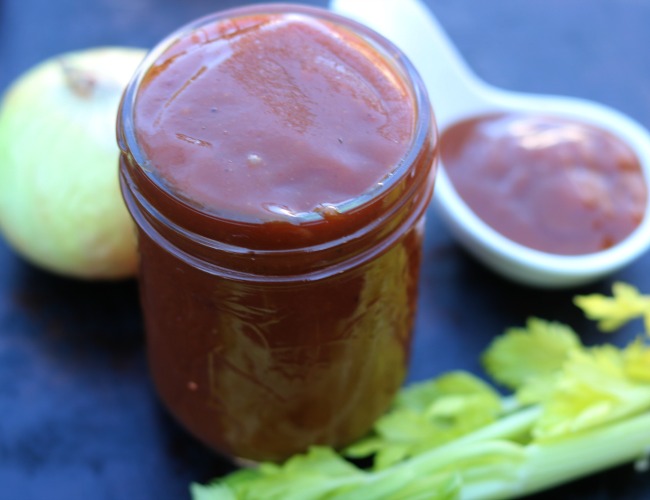Sometimes, when I’ve done something for a long time, I forget that others might not be as familiar with the how-to. That’s what happened to me recently at the Master Gardener Garden Expo. I was in charge of the herb demonstration booth and showcased how to make your own homemade versions of those expensive gourmet products from the store. People came to me, afraid to try to make their own herbal salts, herbal vinegar, and herbal oils. When I gave them a quick demo, everyone told me, “That’s it? I didn’t think it would be this easy!” If you are interested in learning how to make herbal vinegar, I’m sharing my simple Homemade Herbal Vinegar recipe.
Homemade Herbal Vinegar Recipe
The only downside of herbal vinegar is you can’t use it as soon as it is prepared. It must set for 10 days before use. But, you can make a variety of blends of vinegar at once and pretty much forget it over the ten day period.
What You Need to Make Herbal Vinegar
- white vinegar
- fresh herbs of your choice
- airtight container, preferably glass
- Seriously. That’s it.
Good Herb Choices for Your Vinegar:
Use 1/4 to 2 cups of any of these fresh herbs.
- oregano
- marjoram
- tarragon
- rosemary
- thyme
Can I use other types of vinegar?
Yes! It all depends on the taste you want. Good substitutions for the white vinegar include:
- white wine vinegar
- red wine vinegar
- apple cider vinegar
- balsamic vinegar
- rice wine vinegar
- champagne vinegar
Tip: Some kinds of vinegar, such as balsamic or apple cider, have a stronger flavor. Pair these with the more flavorful herbs, like rosemary or sage.
Other kinds of vinegar, like rice or champagne, or sweeter. Pair them with a delicate herb, like lavender.
How to Make the Vinegar:
There are two methods; heated and unheated. I prefer unheated because it is easier, but I’ll include both so you can make the version you prefer.
- The Unheated Variety.
- Gently rinse the herbs under warm water. Pat them dry with a paper towel.
- Remove the leaves from the stems. Set aside.
- In a clean jar, add one cup of vinegar. Place the herbs in the jar and seal. Shake the mixture vigorously.
- Place the vinegar in a cool dry place away from heat and direct sunlight. Allow the vinegar to sit for 10 days before using. If desired, remove the herbs before using the vinegar.
2. The Heated Variety.
- Gently rinse the herbs under warm water. Pat them dry with a paper towel.
- Remove the leaves from the stems. Set aside.
- In a small saucepan, over medium heat, add one cup of vinegar. Bring the vinegar to a simmer, but do not boil. Remove the vinegar from the heat and allow it to cool to room temperature.
- In a clean jar, add the herbs. Pour the cooled vinegar over the herbs. Seal the jar. Shake the mixture vigorously.
- Place the vinegar in a cool dry place away from heat and direct sunlight. You can use the vinegar after preparing, but it will taste better if you allow the vinegar to sit for 10 days before using it. If desired, remove the herbs before using the vinegar.
To drain or not to drain?
It depends on how strong of a herbal flavor you prefer in your vinegar.
After 10 days, when the vinegar is ready to use, you can drain it through a thick paper towel or cheesecloth to remove the herbs, if you desire. Pour the vinegar back into the airtight jar and seal tightly. Label the jar and store in a cool, dry place.
If you want the vinegar to have more herbal flavor, don’t remove the herbs. These herbs will continue to add flavor, making this an easy way to infuse herbs with vinegar.
Can you use more than one herb in your vinegar?
Once again, yes! Mix and match your favorite herbs to create tasty new concoctions. Here’s some ideas:
- Parsley and sage
- Rosemary and thyme
- fennel and thyme
You can also add other ingredients to your herbal vinegar, like
- peeled garlic cloves
- dried chilies
- orange or lemon peel
- fruit, such as strawberries or apples
How to Store the Vinegar
You can try either of two ways. My preferred method is to store the vinegar in a cool, dry place away from direct sunlight, like my pantry. The vinegar should remain flavorful for a year.
Some people prefer to store their vinegar in the refrigerator and use it within a few weeks. Either way will work well.
How Do I use Flavored Vinegar?
Another common question I received was “What do I use the herbal vinegar in?” Try it in any of these dishes:
- salad dressings
- marinades
- sauces
- soups or stews (just a teaspoon or so)
- barbecue
- drizzle for roasted vegetable
- drizzle over fish or chicken
- condiments like barbecue sauce or mustard
If that’s not enough, you can also use the vinegar as a hair rinse after you’ve shampooed and conditioned your hair or use it as a natural (and fragrant!) cleaner.
Are you ready to try your own herbal vinegar? Start experimenting with different combinations today. Have you made your own herbal vinegar? Let me know your favorite combinations in the comments!
You Might Like These Posts:
How to Grow Chives and Culinary Uses
How to Grow Parsley and Culinary Uses
How to Grow Basil and Culinary Uses
